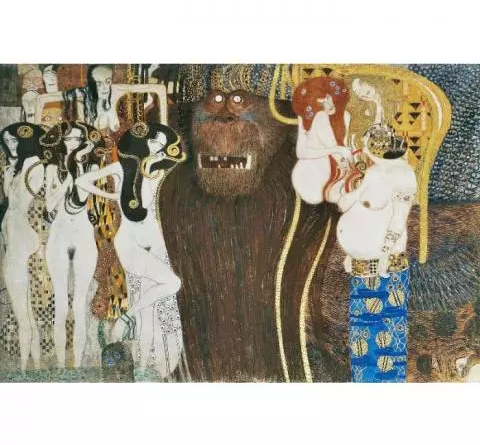Critics about Gustav Klimt’s Work
Gustav Klimt (1862 – 1918) was a radical symbolist painter and artist from the province of Vienna in the Austrian Empire during the Vienna secession period. He is regarded as an integral influencer in the artistic avenues of symbolism, art nouveau, and the modern art movement.
Although a prominent figure and forefather of the genre, Klimt has also been heavily criticized and critiqued for the crass erotic themes displayed in his work and their seemingly overly sexualized nature and overtly pornographic imagery.
Art, if nothing else, has always been a topic wholly open to debate and interpretation, for even the littlest lover of art will still have an opinion on the matter. Gustav Klimt’s art and drawings are a prime example of this as many have regarded him as a trend-setting and rule-breaking phenomenon, while others have branded him as little more than a pervert.
Post Content
A Symbolist Sexualist
In almost all of Gustav Klimt artworks, you will find images of sex and the naked female body. It is undeniable that the man had an intense infatuation with the female form. This is not too uncommon, for the beauty and perfection of the female form have often been an inspiration for artists. However, in Klimt’s case, the erotic depictions, including scenes of masturbation, have caused controversy.
To take the example from the image above titled the “Beethoven Frieze,” the dichotomy of Klimt’s talent yet warranted critique is plain to see. Nevertheless, the symbolist painting has a precise skill and unique vision. It is the cornerstone for all artistic expression to do what has never been done before. And in a way that has never been done before.
The Beethoven Frieze The Hostile Powers. Far Wall – Gustav Klimt
Yet, it is also plain to see that the painting holds little more meaning within it than the adoration for the basest of desires. From the sheer unbridled nakedness of the women depicted, who all seem to possess erotic blissful expressions, to the wild monkey-like creature in the center, perhaps meant to represent Klimt’s animalistic urges.
The majority of criticism of Gustave’s art may stem from the conservative religion of the period he lived, and his work might be a counter-criticism of this. Still, his work’s blatant raw sexual energy cannot be denied.
Philosophical or Pornographic
Another argument against Klimt is not just their erotic nature but also the pornographic tint therein. From scenes to self-gratification, mass sexual engagement, and lesbianism, Klimt pulled no punches to highlight human nature’s hidden desires.
Again, due to the strict conservative religious influence still within society at the time, perhaps one of Klimt’s motives for his work was to challenge the repressed status quo of religion.
Nonetheless, when Klimt was hired to work on murals for the ceiling of the University of Vienna, he produced perhaps three of his finest paintings. Titled, Philosophy, Medicine, and Jurisprudence, all of which contained some erotic elements and nudity, Klimt came under heavy public attack and scrutiny, and the paintings would never go on display.
As a result, the artist would never work on a public commission again and doubled down on his artistic vision. His next painting, titled “Goldfish” (see above), responded to this public backlash and again displayed naked women, one of which was bending over as if to challenge his critics openly.
The Degradation of Art
Although credited as one of the early pioneers of the modern art movement, Klimt has also been criticized. Many believe that contemporary modern art is a fatal fall from grace and little more than childish abstraction compared to the most prestigious works of the painters and artists from earlier periods in history.
Take Klimt’s Golden and Beach Forest collections, just one of his many works in the modern ‘abstract’ style. Sure, it is strikingly colorful and unique, and Klimt should be praised for breaking the molds of convention, but the criticism lies in the lack of meaning behind the abstraction.
Most artists are lorded for their phenomenal imagination and motivation to bring forth humanity’s highest ideals and aspirations in their work. But Klimt and other artists of a similar ilk have received criticism for lowering this standard and resorting to what has been argued a ‘lesser’ state.
Instead of works of incomparable skill containing grand ideas, philosophies, and imagination, modern art has been criticized for its lack of all three and the ‘dumbing’ down of the art form. Whether this is wholly true or not, though, is debatable.
The Bottom Line
In many eyes, Gustave Klimt will go down as an essential and trendy artist. This is because not only did he innovate and adopt new styles of artistic ideas and expression, but he also contributed to pushing forth the now more liberal views within our modern society. But, whether Klimt’s work holds up as necessary in grand historical terms is another question entirely; and open to your interpretation.




